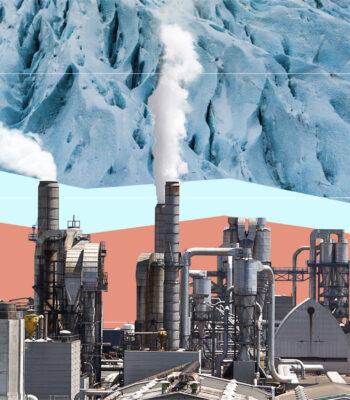As sustainability leaders aim to bring clarity and accountability to their supply chains, product carbon footprints (PCFs) stand out as the long-term gold standard. But for most companies, getting there is far from simple. High costs, complex data demands, and operational limitations make product-level carbon data impractical to collect from suppliers at scale.
That’s where facility-level emissions data comes in.
Tracking emissions at the facility level offers a powerful middle ground—one that balances specificity with feasibility. It enables companies to see where their emissions are actually coming from, drive real change with suppliers, and prepare for the regulatory future.
This blog explores why facility-level tracking is emerging as a valuable step toward supply chain decarbonization. You’ll discover how to use this approach to cut emissions, comply with new regulations, and build a foundation for credible carbon accounting.
What are facility-level emissions?
Facility-level emissions refer to the greenhouse gas emissions produced at a specific supplier site, factory, or production location. Unlike supplier-average data, which blends emissions across the full organization, facility-level tracking reveals the unique carbon footprint of each location that contributes to your supply chain.
Most companies today rely on a combination of spend-based estimates and supplier-wide averages. These methods, while practical, can obscure high-emitting outliers or mask progress made at individual facilities. Facility-level data can change the game. It shows you exactly which supplier locations need the most attention, and lets you attribute emissions based on the facilities and sites where your purchased products are produced.
For example, Apple’s Supplier Clean Energy Program assists with the transition to renewable energy at all supplier facilities involved in Apple products by 2030. It’s a bold statement that facility-level accounting can lead to greater actionability—and other companies are taking note.
This shift isn’t just about better data—it’s about better results. When you know which facilities are underperforming, you can have targeted conversations about improvements, track progress at a granular level, and replicate successes across your supply chain.
Plus, facility-level emissions tracking isn’t just a best practice—it’s becoming a regulatory requirement.
The EU’s Carbon Border Adjustment Mechanism (CBAM) mandates facility-specific emissions data for imported goods in carbon-intensive industries, reinforcing the need for precise, auditable emissions tracking. Companies that lack facility-level transparency will struggle to comply, risking financial penalties and restricted market access.
Beyond CBAM, facility-level tracking aligns with GHG Protocol standards, particularly Scope 3 Category 1 (Purchased Goods and Services) and Category 2 (Capital Goods). As regulators and investors demand greater emissions specificity, shifting from supplier-averaged data to facility-level reporting is critical.
Benefits of facility-level emissions
Moving from supplier-wide averages to facility-level emissions data unlocks a powerful set of benefits for sustainability, procurement, and compliance teams.
Rather than guessing at where your emissions come from, or treating your supplier as a monolith, you can target the specific facilities that matter most to your footprint. This makes your emissions program more efficient, more actionable, and more credible—both internally and externally.
Here are four key benefits of collecting facility-level emissions data:
1. Pinpoint emissions hotspots: By identifying which facilities produce the most emissions, companies can focus decarbonization efforts where they’ll have the greatest impact—zeroing in on specific plants tied to their products rather than improving emissions across an entire supplier.
2. Track and verify reductions: With granular data, it’s easier to track progress toward your decarbonization goals. If a supplier upgrades equipment or switches to renewables at a plant tied to your products, that impact is reflected in facility-level data.
3. Prepare for regulations: Facility-level reporting is rapidly becoming standard across both voluntary and mandatory frameworks. CBAM is the most prominent example, but investor-driven disclosures are trending the same direction.
4. Lay the ground work for PCFs: Product carbon footprints require emissions attribution to specific inputs and processes. Facility-level data is the foundation for building that capability over time. Companies that adopt it today will be well-positioned to scale to PCFs in the future.
How to collect facility-level emissions
Getting facility-level emissions data isn’t easy. Many suppliers still lack the systems, expertise, or capacity to track emissions at a granular level. And, even when they do have the data, collecting and managing it requires complex coordination across potentially hundreds—or even thousands—of supplier sites. Add in the need for validation, and the process can quickly become overwhelming.
That’s why a thoughtful, phased, and scalable approach is critical—you must make sure that both your organization and your suppliers are ready.
Here are five key steps companies can take to implement a facility-level emissions program and scale it over time.
Step 1: Begin with a supplier-specific emissions inventory
Before diving into facility-level data, ensure your organization has built a solid Scope 3, Category 1 emissions inventory using supplier-specific data.
If your key suppliers aren’t yet reporting emissions, your priority should be to improve supplier engagement and data quality at the company level first. Facility-level requests should only be made once this foundation is in place.
Step 2: Segment your suppliers for targeted engagement
You don’t need to request facility-level data from all of your suppliers. Focus on those who are already calculating and validating their emissions—these suppliers are best positioned to provide high-quality, facility-level insights.
Use segmentation to prioritize suppliers based on emissions impact, reporting readiness, and alignment with your goals. You can also segment by spend, product category, or geographic region to tailor your engagement strategy and make the process more manageable.
Step 3: Educate and equip suppliers for facility-level reporting
For the suppliers from whom you’re requesting facility-level emissions data, it’s essential to provide clear context and explicit instructions. Many may be unfamiliar with reporting at this level of detail—even if they track corporate emissions.
Explain why you’re asking for facility-level data, how it will be used, and what standards or formats are expected. Share practical resources like guidance documents, emissions calculators, and office hours to support their efforts.
If a supplier hasn’t yet built an emissions inventory at all, take the opportunity to educate them on the broader importance of emissions tracking and set expectations for when and how they’ll need to begin.
Step 4: Automate data collection
Manual outreach, spreadsheet management, and validation are time-consuming and error-prone. Tools like Optera’s Outreach and Supply Chain modules can automate emissions data requests, reminders, and validation. These platforms enable suppliers to report facility-level data securely and efficiently, while helping your team focus on strategy and action.
Step 5: Request audited or validated data
To ensure credibility and reduce the risk of greenwashing, request third-party verification of supplier-reported data wherever possible. When audits aren’t feasible, implement internal checks such as
➜ Reviewing year-over-year trends for anomalies
➜ Verifying against production or procurement data
➜ Comparing emissions intensity to industry averages
Start small, but build for scale
Don’t try to tackle everything at once. Begin with a pilot—targeting a few key suppliers or high-impact regions—but use a scalable framework that can grow over time.
A flexible approach ensures you can expand to additional suppliers and facilities while maintaining consistency, transparency, and data integrity.
What comes after facility-level emissions?
Facility-level emissions data isn’t the endpoint—and even more granular data collection isn’t the mission. The goal is more actionable data.
Once you have facility-level data, you can be strategic about your next move, whether that’s PCFs, process-level emissions tracking, or something else.
However granular you choose to get, actionable data lets you identify specific improvements that cut emissions while maintaining or improving efficiency, and communicate product-specific emissions with consumers.
Looking ahead, facility-level tracking positions you well for the next phase of carbon accountability. As regulations tighten and stakeholders demand more transparency, you’ll have the data infrastructure in place to be ready for product-level carbon footprints when they become standard practice.
Facility-level emissions tracking is a natural next step for companies who have incorporated supplier-specific emissions data into their scope 3 inventory and want to eventually move toward PCFs.
The companies moving fastest in this direction are gaining valuable insights that their competitors lack. They’re building stronger supplier relationships, finding unexpected opportunities for improvement, and preparing for increasingly stringent reporting requirements.
How Optera makes facility-level tracking easier
Tracking emissions at the facility level can lead to a potentially overwhelming amount of data. Optera’s Supply Chain module is built to make that data comprehensible and insightful. Instead of wrestling with countless spreadsheets, companies can automate data collection and validation. Plus, Optera’s Outreach module makes it possible for sustainability teams to collect emissions data from suppliers at scale.
This automation matters because it frees up time for what’s important: using the data to drive change. Procurement teams can see which supplier facilities meet their standards and which need improvement. Sustainability leaders can track the impact of different initiatives across specific locations. And when suppliers make improvements, the results show up in the data.
The platform also makes it possible to evolve your approach over time. Start with your highest-impact suppliers and facilities, then expand as your program matures. The system grows with you, maintaining data quality and consistency as you scale.
Reach out today to learn more about how Optera can help you begin and/or scale your facility-level emissions strategy.


